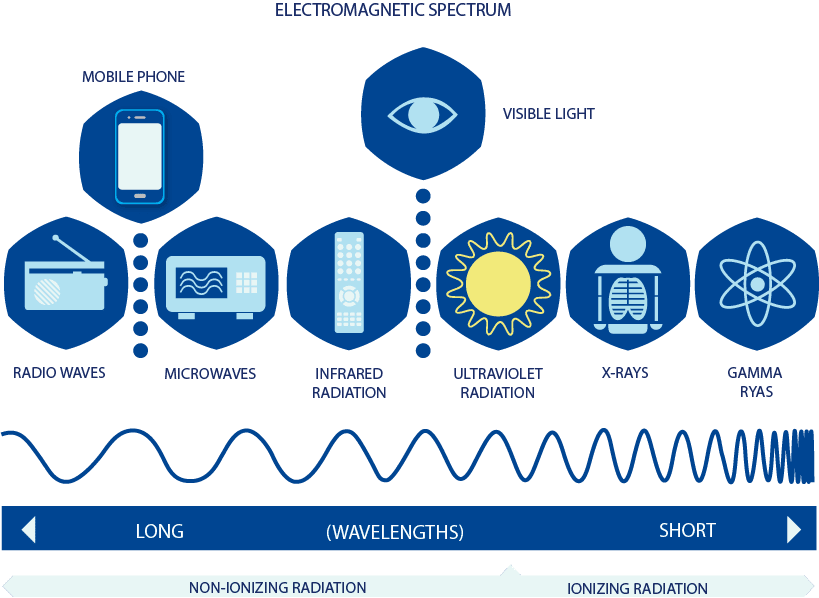The radiation RF-EMF causes DNA damage, tissue heating and even disrupt the blood brain barrier. These are real-world effects, and ARPANSA is actively involved in discussions with EHS communities, medical specialists, and researchers. ARPANSA will continue to study research related to the health effects of EMF radiation.

RF-EMF damages DNA
Exposed to man-made electromagnetic fields (EMFs) is associated with DNA damage, as well as other health adverse effects. EMFs can disrupt intracellular ionic concentrations, which are essential to ensure the electrochemical balance of cells. In turn, this can alter the balance of cell metabolism, resulting in DNA damage. Moreover, emf radiation to EMFs can cause an increase in the production of free radicals and reactive oxygen species (ROS).
Exposure to RF-EMF radiation has been linked to changes in male germ cell development. emf radiation symptoms results in the transformation of germ cells into spermatozoa, aswell functioning maturation as spermatozoa travel through the epididymis. To investigate the effect of RF-EMF exposure on male germ cells, a specifically-designed waveguide machine was constructed for the purpose of exposing mice without restriction to RF-EMF with a dose of 2.2 W/kg.
In a study that was conducted recently, researchers discovered that exposure to RF-EME causes the oxidative DNA damage of spermatozoa. Sperm DNA fragmentation was increased by 18% after a week of treatment, and by 23% after 5 weeks. Furthermore, DNA damage in mitochondria was observed by measuring the level of a biomarker, 8-hydroxy-2-deoxyguanosine (8-OH-dG).
Although the radiation emitted by RF-EMF isn't yet classified as a cancer-causing agent. But, several studies have revealed that RF-EMF exposure can impair DNA integrity in a range of cell lines. In one of these studies researchers were exposed Vero cells with an EMF at 100 Hz over 45 minutes. They measured DNA damage 48 hours after exposure to determine if exposure affected DNA integrity.
RF-EMF causes tissue heating
While the effects of RF-EMF are generally believed as thermal in nature, some studies have demonstrated that non-thermal effects are also evident. These effects may account for certain of the unsolved findings in the epidemiological study of EMF hypersensitivity. This is why it is crucial to take into account non-thermal effects when conducting an extensive review.
The non-thermal effects of RF-EMF could be mediated by the cell membrane. emf radiation is a field where research has been extensively studied. In particular the electrochemical properties of cell membranes has been investigated. The current understanding is that energy from RF-EMF greater than 1 MHz is transferred to tissue via dielectric and ionic dissipation. Previous theoretical analyses indicated that the energy that is transferred to tissues could be up to 200 kV/m.
The electric properties of tissues are regulated through the distribution and composition of water molecules and other molecules within the body. This determines how absorbed RF EMR is by different tissues. The tissues with the highest conductivity tend to absorb more of the field, and thus cause more of an effect. This is why the degree of tissue heating doesn't increase continuously from outside to inside the body however, it is more prevalent in hot areas. Bone and fatty tissues are less prone to RF heating than other tissues, because they have a low water content.
The intensity of the field's penetration is determined by the strength and frequency of the field. Muscle tissue is more able to absorb field energies than the other tissue and converts it into heat more efficiently. Usually, the depth of penetration for RF EMF is determined as millimeters (mm). But, the higher the frequency, shallower the penetration.
RF-EMF causes blood-brain barrier disruption
Researchers have discovered that RF EMF can alter the blood-brain-barrier which can alter sleep patterns and neurotransmitter levels. Additionally the impacts that EMF on brain activity have been linked to neurodegenerative diseases. For instance, EMF from mobile phones could affect the electroencephalogram's activity and sleep patterns, in addition to the activity of nitric oxide and xanthin oxidase.
Researchers from the Vienna University have studied the effects of exposure to RF-EMF to brain cells. They also examined the effects of ELF EMF on the brain system. Though the cellular mechanisms that play a role are not fully known however, there is an obvious relationship between exposure to ELF EMF and myelin depletion. This relationship might account for the electro-hypersensitivity symptoms of electro-hypersensitivity. Fortunately, there are some known methods for regenerating myelin in the brain.
Researchers have found that exposure to 900 millimeters EMF caused a rise in the permeability of the BBB and increased signs of neuronal damage in rats. They also observed increased exovasation of albumin into neurons. Further, they found the following: after 30 mins of exposure at 900 MHz 99mTc-MIBI accelerated its penetration into the brain. However this effect did not happen with Evans blue injections.
However, RF-EMF has no clear mechanism to disrupt the BBB. The evidence suggests that nonthermal EMF exposure may increase erythrocyte cell membrane permeability, which could alter the BBB and also increase calcium ion efflux. Furthermore, the presence a 99mTcMIBI radiotracer inside the brain has been connected to increasing the permeability and permeability of the BBB.
